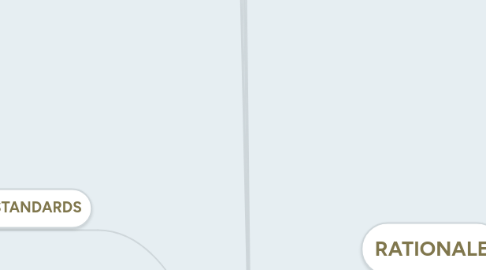
1. RATIONALE
1.1. Technologies enrich and impact lives of people and societies globally.
1.1.1. Transforming, restoring, sustaining- our societies, natural, managed, constructed and digital environments.
1.2. Links Design and Technology and Digital Technologies
1.2.1. Students learn about and work with traditional, contemporary and emerging technologies that shape their world.
1.3. Digital technologies are widespread. They provide new ways of thinking, collaborating and communicating.
1.3.1. Students progress from creative, directed play to consolidation of knowledge, understanding and skills.
1.3.1.1. Opportunities are given to apply practical skills and processes when using technologies and resources to create innovative solutions to meet current and future needs.
1.4. Students develop a capacity for action and critical appreciation of the development and contribution of technologies to society.
1.4.1. Students are given opportunities to shape and challenge attitudes to the use and impact of technologies by evaluating
1.4.1.1. They will do this by evaluating how their own and others' solutions affect users, equity, sustainability, ethics and personal and social values.
1.4.1.1.1. The creation of solutions and responding to the designed world will contribute to sustainable patterns of living for themselves and others.
2. AIMS
2.1. To develop knowledge, understanding and skills. That students work individually and collaboratively.
2.2. For students to be creative, innovative and enterprising when using traditional, contemporary and emerging technologies and understand how technologies have developed over time.
2.3. For students to effectively and responsibly select and manipulate appropriate technologies, resources, materials, data, systems, tools and equipment when designing and creating products, services, environments and digital solutions.
2.4. Students are able to critique and evaluate technology processes to identify and create solutions to a range of problems or opportunities.
2.5. Students investigate, design, plan, manage, create. produce and evaluate technology solution.
2.6. That students can engage confidently with technologies, make informed ethical and sustainable decisions about technology for preferred futures
2.6.1. Including personal health and wellbeing, recreation, everyday life, the world of work and enterprise, and the environment
3. CROSS-CURRICULULUM PRIORITIES
4. Design and Technologies
4.1. Processes and Production Skills
4.1.1. Critiquing, exploring and investigating needs or opportunities
4.1.1.1. Generating, developing and evaluating design ideas for designed solutions
4.1.1.1.1. Planning, producing and evaluating designed solutions
4.2. Knowledge and Understanding
4.2.1. The use, development and impact of technologies in people's lives
4.2.1.1. Design concepts across a range of technologies contexts
5. Digital Technologies
5.1. Knowledge and Understanding
5.1.1. How data is represented and structured symbolically
5.1.1.1. The components of digital systems: software, hardware and networks
5.1.1.1.1. The use, development and impact of information systems in people's lives
5.2. Processes and Production Skills
5.2.1. Collecting, managing and interpreting data when creating information, and the nature and properties of data, how it is collected and interpreted
5.2.1.1. Using a range of digital systems and their components and peripherals
5.2.1.1.1. Defining problems and specifying and implementing their solutions
6. KEY IDEAS
6.1. Systems thinking and the overarching idea: Creating preferred futures
6.1.1. Systems thinking is a holistic approach where parts of a system are analysed individually to see the whole, the interactions and interrelationships between the parts and how these parts or components influence the system as a whole
6.2. Engage in predicting outcomes and impacts of technological decisions for current and future generations and their environments.
6.3. Creatively and actively design solutions to meet present needs without compromising the ability of future generations to meet their needs.
6.4. Acknowledge the strong connection with the Australian Curriculum: Sustainability cross-curriculum priority.
7. Content Structure
7.1. Foundation to Year Ten
7.2. Knowledge and Understanding
7.3. Processes and Production Skills
7.4. Band Level descriptions
7.4.1. Foundation - Year 2
7.4.2. Years 3 and 4
7.4.3. Years 5 and 6
7.4.4. Years 7 and 8
7.4.5. Years 9 and 10
8. ACHIEVEMENT STANDARDS
8.1. Describes progress, demonstrates a broad sequence of expected learning and provides teachers with a framework of growth and development in each Technologies subject.
8.2. Describes the quality of learning that would indicate the student is well placed to commence the learning required at the next level of achievement.
8.2.1. The depth of conceptual understanding and the sophistication of skills
8.3. Reflects the distinctive practices of each subject along with aspects of learning that are common to all Technologies subjects.
8.3.1. Subject-specific terminology and organisation reflect the essential characteristics of learning in each subject
